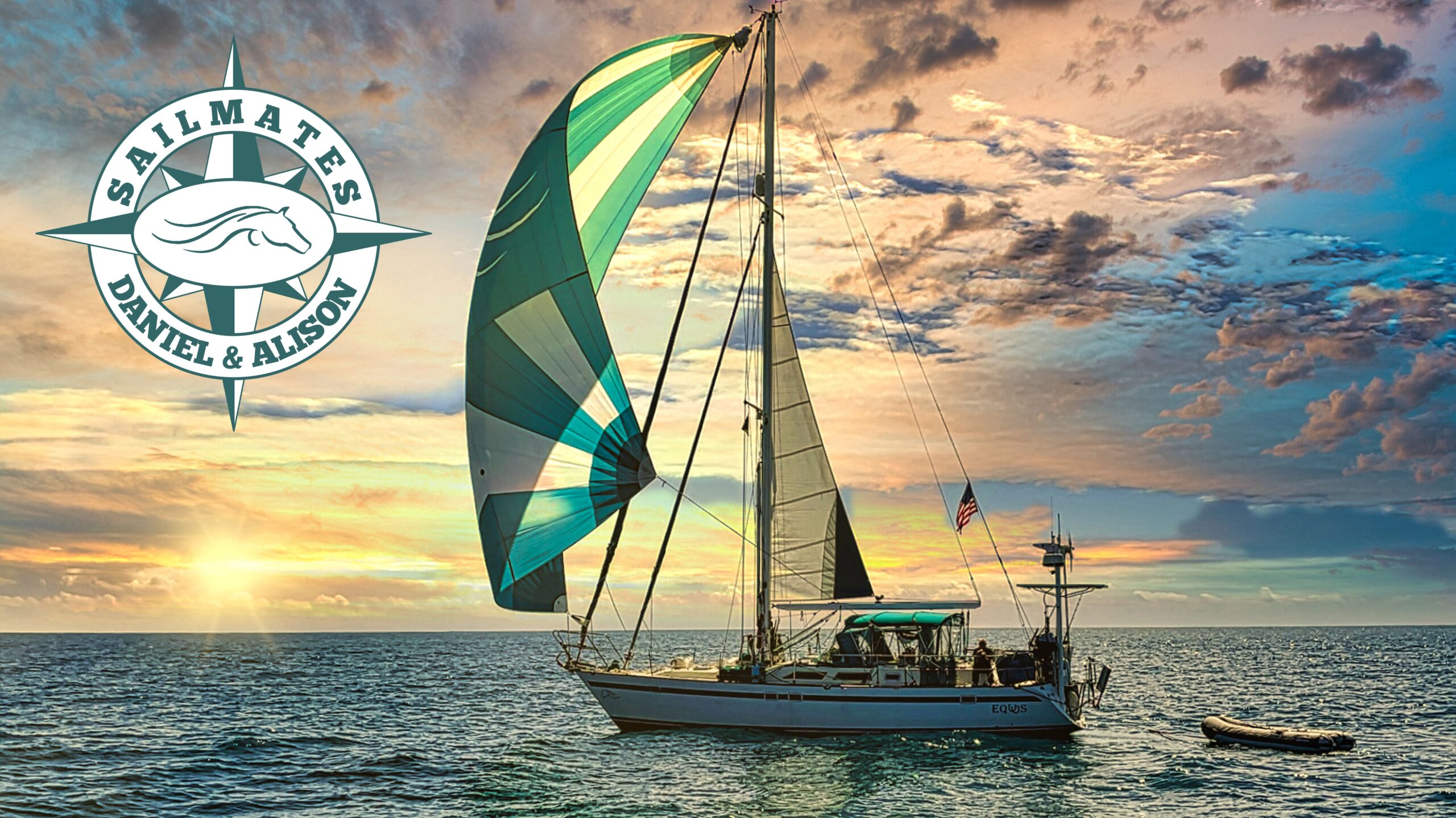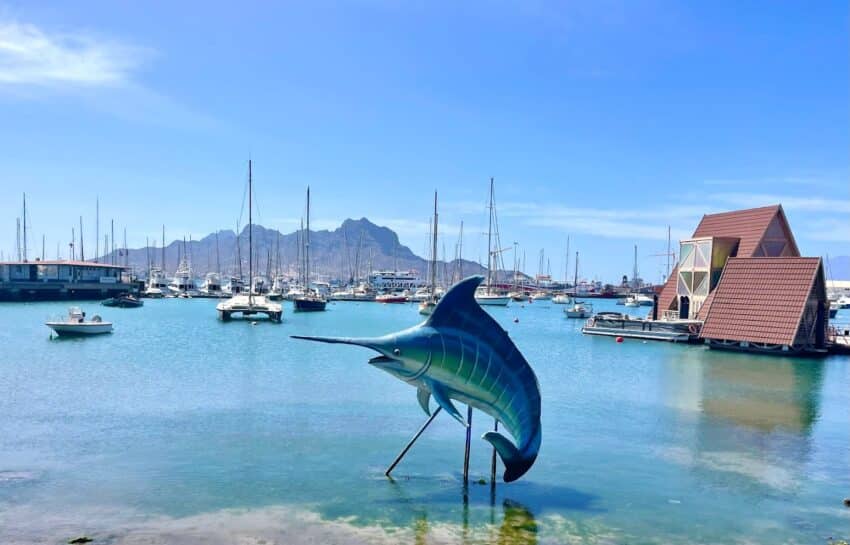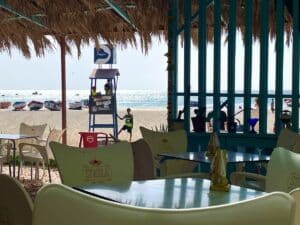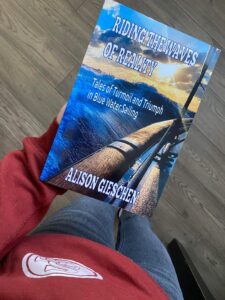
However, sailors face a pivotal decision upon departing from the Canaries: should they chart a direct course to the Caribbean, a three-week passage for most cruising boats, or opt for a detour southward to the captivating Cape Verde Islands? The Cape Verde archipelago, situated strategically along the sailing route 500 miles off the coast of Africa (Senegal), offers a compelling alternative. With just a week’s sail from the Canaries, these islands provide a stopping point, a stepping stone before embarking on the final leg of their transatlantic journey.
Changing Course to Cape Verde
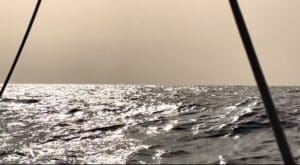
Our enthusiasm was dimmed by one factor, the lack of sunshine. It wasn’t cloudy; however, the entire sky and horizon were shrouded in an impenetrable haze. Saraha winds were blowing across the sea from Africa. We felt as if we were on an ocean set from the movie ‘Dune.’ Sunrises and sunsets were non-existent. The sun couldn’t penetrate through the veil and appeared as a dim orb, like a flashlight beam trying to penetrate a bed sheet. There was no color on the horizon as the sun rose and set. During the day the sun was slightly brighter but didn’t even shed enough light to charge our batteries fully through our solar panels. We had to run our generator once daily.
Still, we felt confident about making the hop directly to Barbados. However, fate had other plans in store as we encountered issues with our autopilot five days into the passage. Our problems began when the winds decreased and we raised our spinnaker. Our autopilot protested and began shutting off repeatedly. We lowered the spinnaker and cruised through the night.
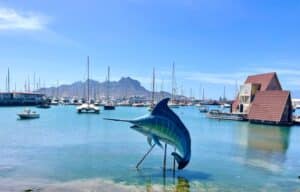
Seizing the opportunity to address the problem, we altered our course and two days later were anchored safely in the charming harbor of Mindelo, nestled on the island of São Vicente in Cape Verde. It is the sailing capital of Cape Verde and has the most resources for sailors with a well-protected harbor and a marina. We were instantly charmed by the colorful city surrounding the harbor with a backdrop of magnificent volcanic mountains.
A Brief History of Cape Verde
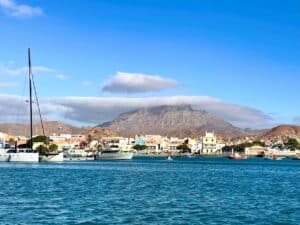
Despite centuries of Portuguese rule, the Cape Verde Islands gained their independence in 1975, marking a significant milestone in their history. Since then, the islands have undergone a remarkable transformation, evolving into a vibrant melting pot of cultures and traditions. Today, the population of Cape Verde is a testament to its diverse heritage, with a blend of African, European, and Creole influences shaping the island’s unique culture.
There are ten islands, each with its own distinct character and charm. Not all of the islands have suitable harbors for anchoring. Cruising through the islands would take research on wind direction and how it impacts the anchorages. That being said, these islands are reminiscent of the Caribbean before it became commercialized. Similar to the Canary Islands, this archipelago has fewer towns and cities but each island offers unique and beautiful hidden treasures. You will find lots of Loggerhead turtles here as they have chosen these islands as their breeding grounds.
Harbor of Mindelo
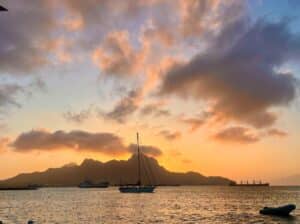
Here is some first-had useful information for those who plan to arrive, or find themselves here by chance.
- Mindelo harbor has a fairly large area for anchoring. You need a good anchor. We watched several boats drag anchor after five attempts. It will be windy due to the catabatic winds flowing down from the mountains.
- There are two obstacles to avoid in the harbor. There is a large wreck in the center (very obvious) and there is a ferry terminal. Don’t anchor in front of their entry and exit point. You will be asked to move.
- There is a customs and immigration check-in at the police station where the cruise ships come in. It’s a short walk from the marina. Just a head’s up, while they are laid back and friendly, they do keep your boat documents until you check out. We have not encountered this procedure in other ports.
- There are grocery stores to provision. Do not expect a great variety of fruits, vegetables, and meat but you can get all the packaged basics. The Fragata on the left side of town is the largest grocery store and has a counter where you can get a SIM card. It has a meat counter and is the only store with fresh ground beef on the island. Both Fragata markets only take cash, Euros or local Escudos, so hit up an ATM first if needed. A few blocks further uptown to the northeast is a Meu Super. It carries many Continente brand items from Portugal.
- You will find a couple of local fresh markets selling vegetables and fruit. There are a lot of root veggies, lettuce, and tomatoes, but there will not be a great variety of vegetables. Your best bet will be the Meu Super.
- There is a nice little marine repair shop with a small selection of electronics and replacement parts. Don’t expect any repairs to happen quickly. They are on island time. (Boat CV – Meio do
- The town has many good restaurants (good sushi at The Nautilus just outside the marina) and Mindelo is a quaint and fun little city. The best part for us was the floating bar attached to the marina dock. You can bring your dinghy there and meet just about everyone anchored or in a slip. It has a fun, friendly atmosphere, with WIFI and a few outlets for charging phones. The food is excellent, and the drinks are very reasonable. Happy hour there, surrounded by scenic views is a little slice of heaven.
- Taking a tour of the island (which we did by rented scooter) is not recommended. The roads are rough and the views are not spectacular. However, a visit to Sao Pedro by the airport is fun. It is there you can swim with a crowd of sea turtles who are very used to visitors. There is an adorable restaurant on the beach that has very excellent Sangria.
Cape Verde Take-Aways
While our visit to Cape Verde was unplanned, I’m happy to have visited. This is not a popular vacation destination although we heard from visitors we met at the floating bar, that when island hopping by ferry you can find excellent, quaint inns, and exceptional restaurants. The beaches in the sheltered harbors can be quite spectacular. If you love hiking, there are scenic, mountain trails waiting to be explored. We did not get our autopilot issues resolved but we feel confident it will get us safely across the Atlantic to a place where we can get replacement parts. We are currently waiting for a good weather window to make the jump.
I’m glad we got to experience Cape Verde’s unique beauty and essence. Similar to the Canaries, there are a plethora of sailing hitchhikers here looking to be crew to cross the Atlantic. The sailing vibe is strong here, and well worth the stop if you are looking to break up the trip to the Caribbean. You will find food and shelter, certainly not what you will find in the Canaries, but Mindelo will capture your heart and you will her when you sail away.
As always, thank you for following our adventures.
Fair winds,
Alison and Dan
S/V/ Equus
(NOW AVAILABLE IN AUDIOBOOK)
Enjoying our blog posts? Check out our newly launched book, Riding the Waves of Reality. This is the story of the first five years of our circumnavigation. There are lots of practical tips as well as the facts and realities of liveaboard sailing. This book is for anyone who loves adventure, travel, the discovery of new places, and tales of overcoming adversity. Put it on your gift lifts for your sailing and adventure-loving friends!
5 Star Reviews!
“A well written account about the perils and joys of challenging the powers of the oceans and surviving.This book is as interesting to the non sailors as to those who aspire to commit to a life changing experience. For the wannabe sailors it provides them with the dangers as well as the joy, beauty and excitement of blue water sailing. For fellow sailors it introduces them to many remote ports of interest and obstacals to be dealt with especially regulatory issues . For the average reader it is a rewarding read, providing excitement, interesting stories of adventure, perils, beauty and success to achieve freedom of being one with the ocean.”

